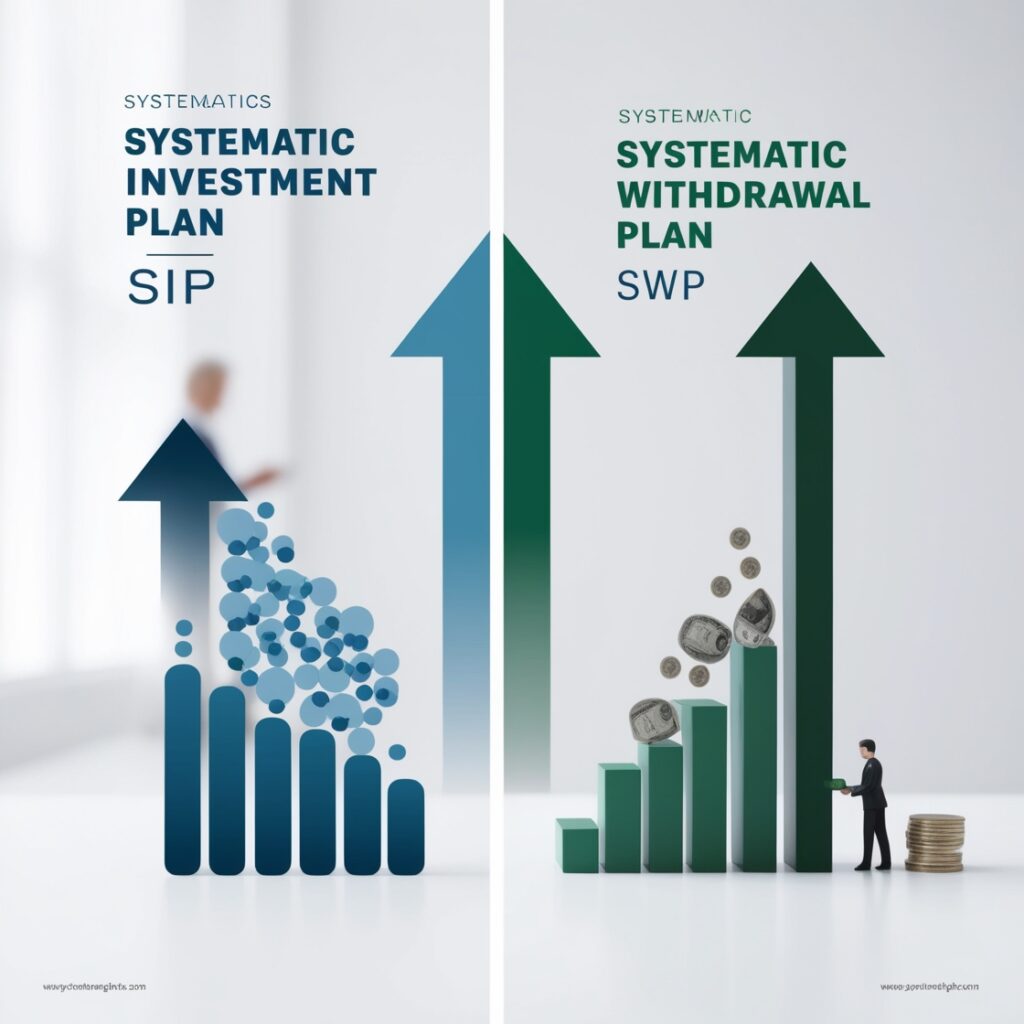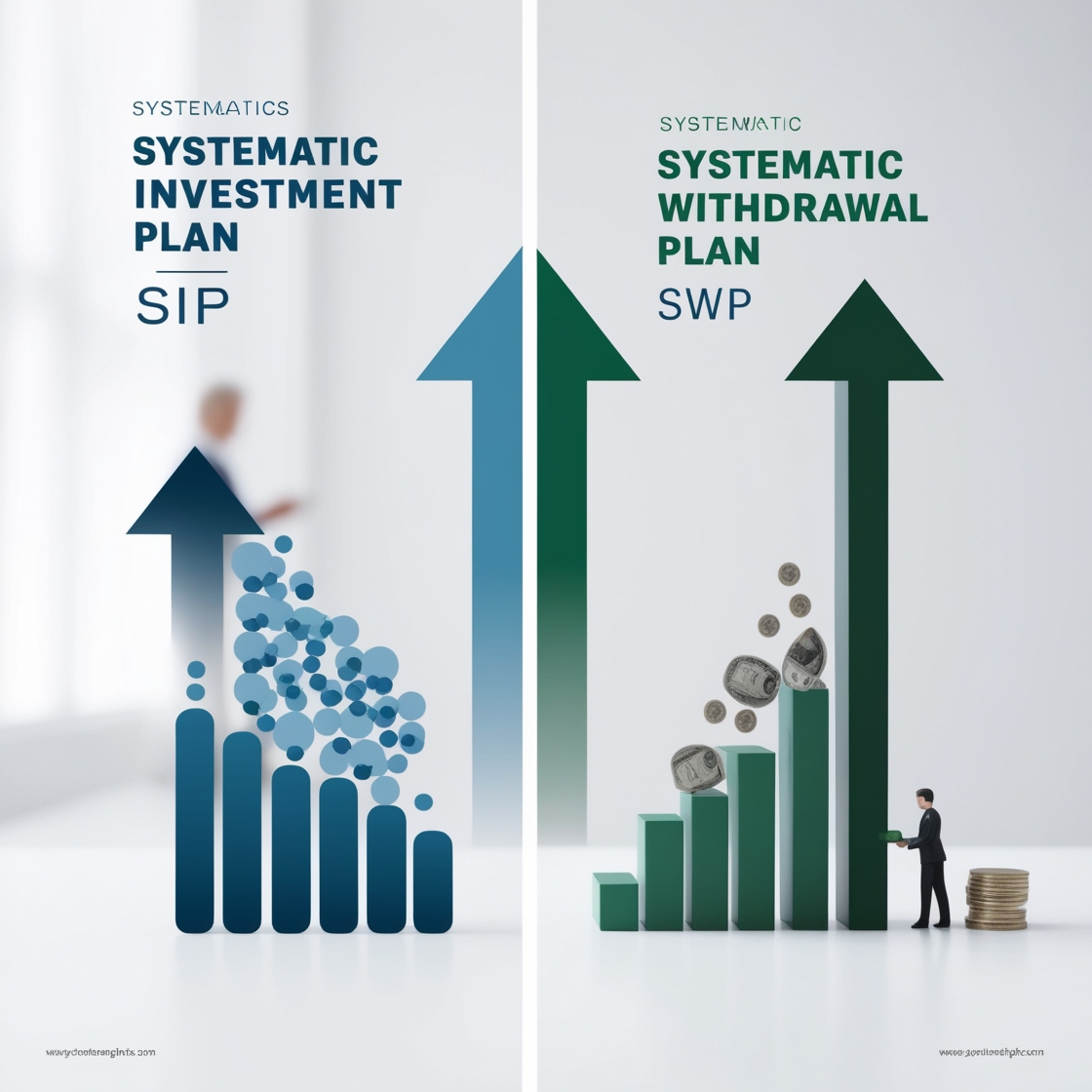
Investing is one of the best ways to secure your financial future, but often, people hesitate because they feel overwhelmed by the complexity of the process. The good news is, there are simple and effective investment strategies that can help you grow wealth without needing to be a financial expert.
Two of the most popular and reliable options are Systematic Investment Plan (SIP) and Systematic Withdrawal Plan (SWP). Both plans are designed to give you financial stability, but they serve different purposes—one helps you accumulate wealth, while the other helps you withdraw it strategically. In this blog, we’ll explore what SIP and SWP are, how they work, and which one might be right for you.
What is SIP (Systematic Investment Plan)?
A Systematic Investment Plan (SIP) is a method of investing a fixed amount of money at regular intervals (monthly, quarterly) into mutual funds. Instead of investing a lump sum amount all at once, SIP allows you to invest smaller amounts regularly, regardless of the market conditions.
How Does SIP Work?
When you invest through SIP, you buy units of a mutual fund at regular intervals. The number of units you purchase depends on the market price (also known as the NAV – Net Asset Value) at the time of investment.
For example, if you invest ₹5,000 per month into an equity mutual fund:
- In a month when the NAV is low, you buy more units.
- In a month when the NAV is high, you buy fewer units.
This process, called rupee cost averaging, helps minimize the impact of market volatility. Over time, SIP allows your money to grow steadily, taking advantage of compounding, where the returns on your investment start earning returns themselves.

Why Choose SIP?
- Discipline and Consistency: With SIP, you commit to investing regularly, which creates a habit of saving and investing for the future.
- Affordability: You don’t need a huge lump sum amount to start. SIPs can be started with as little as ₹500, making them accessible to anyone, regardless of income.
- Compounding: SIPs work well with compounding. The earlier you start, the more you benefit from compounding growth over the long term.
- No Need to Time the Market: You don’t have to worry about market timing. SIP automatically invests your money at different prices, reducing the risk of investing all your money at a high point in the market.
Ideal For:
- Long-term wealth creation
- Beginners who want to start investing with small amounts
- Those who prefer a hands-off, disciplined approach to investing
What is SWP (Systematic Withdrawal Plan)?
While SIP is about systematic investing, the Systematic Withdrawal Plan (SWP) is all about systematic withdrawals. This plan allows you to withdraw a fixed sum of money from your mutual fund investment at regular intervals. This is ideal for individuals looking to generate a steady income stream, such as retirees, or anyone who wants regular access to their invested funds without selling their entire investment.
How Does SWP Work?
SWP allows you to set up a withdrawal plan to receive a fixed amount (monthly, quarterly, annually) from your mutual fund. The amount you withdraw is based on the units in your mutual fund portfolio. Each time you make a withdrawal, the fund manager redeems a portion of your units.
For example, if you have ₹10,00,000 invested in a mutual fund and you choose to withdraw ₹10,000 every month, the fund manager will redeem a portion of your units every month to meet this requirement. This allows you to receive a regular income while still leaving the rest of your investment to grow.

Why Choose SWP?
- Steady Cash Flow: SWP ensures that you receive a fixed income regularly. This is particularly beneficial for retirees who want to ensure they have enough funds for monthly expenses without depleting their savings all at once.
- Flexibility: You can decide how much to withdraw and how frequently. Whether you need a fixed monthly income or a lump sum withdrawal for a specific purpose, SWP offers flexibility.
- Tax Efficiency: With SWP, you can plan your withdrawals in such a way that you minimize your tax liabilities. For example, long-term capital gains on equity funds are taxed at a lower rate compared to short-term gains.
- Continued Investment Growth: Even while you withdraw money, your remaining investment continues to grow, allowing you to keep your portfolio working for you.
Ideal For:
- Individuals in retirement looking for regular income
- Those who have large lump sum investments and want to create a steady income stream
- People seeking to minimize risk by avoiding lump sum withdrawals
SIP vs SWP: Key Differences
| Feature | SIP | SWP |
| Purpose | To invest regularly and grow wealth over time | To withdraw a fixed amount regularly |
| Ideal For | Long-term investors, wealth accumulation | Retirees, those needing a regular income |
| How it Works | Invest fixed amount regularly in mutual funds | Withdraw fixed amount regularly from mutual funds |
| Risk | Market risk associated with investments | Depends on the type of mutual fund, but typically lower risk for fixed-income funds |
| Flexibility | Can start with as low as ₹500, frequency is customizable | Flexible withdrawals as per your need |
| Returns | Focused on long-term growth with compounding | Provides regular income with remaining investment growing |

Which Plan Is Right for You?
- SIP is perfect for individuals looking to build wealth over time with disciplined investing. If you are starting early, SIP allows you to take advantage of market fluctuations and the power of compounding.
- SWP, on the other hand, is ideal for people who have already accumulated wealth and need a regular income. It is especially useful for retirees or anyone looking for a predictable, tax-efficient income stream from their investments.
Can SIP and SWP Work Together?
Yes! In fact, many people use both SIP and SWP as part of their comprehensive financial plan. You can start with SIPs to accumulate wealth and, once you have a sufficient corpus, you can shift to SWPs to generate a regular income. By using both plans, you can ensure that you grow your wealth in the early stages of life and maintain financial security in your later years.
Conclusion
Whether you are just beginning your investment journey or are looking for a way to generate regular income, SIP and SWP offer easy and effective strategies to manage your money. SIP is perfect for long-term wealth creation, while SWP ensures that your wealth works for you when you need it most. By understanding both options and aligning them with your financial goals, you can take control of your future and build a strong financial foundation.


